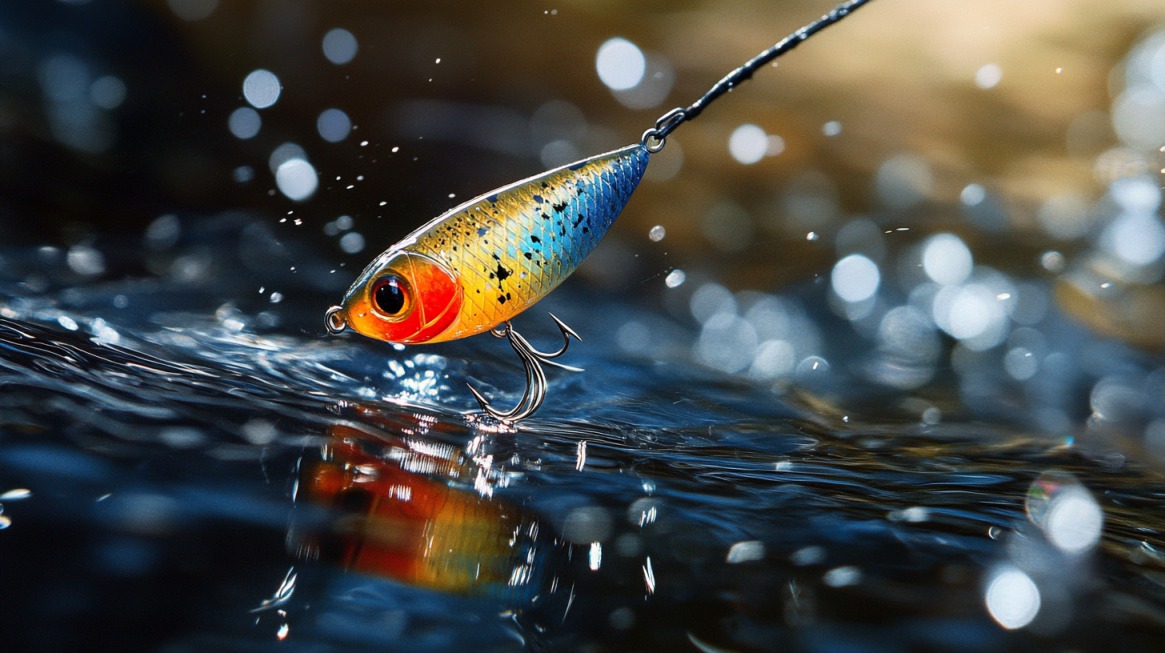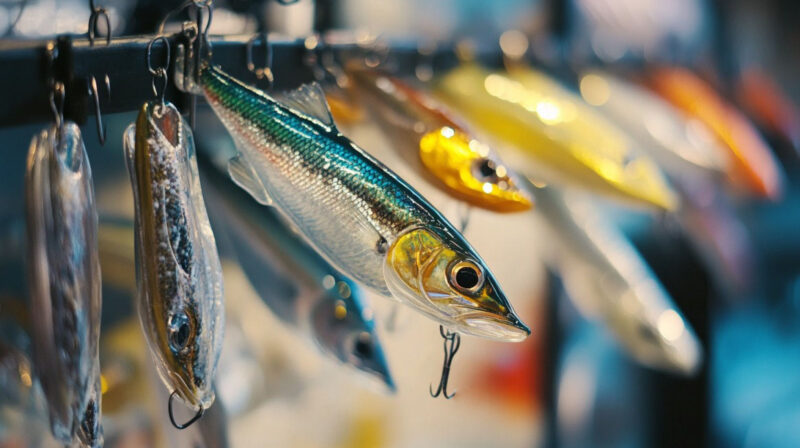Anglers have long debated the effectiveness of live bait versus artificial lures. Passionate opinions fly on docks, forums, and boats, as each method has its fans and success stories.
- Catch rate
- Cost
- Ease of use
- Required skill level
The better option often depends on conditions, preferences, and specific fishing goals.
Overview of Live Bait and Artificial Lures
Fishing success often hinges on one core decision: choosing between live bait and artificial lures.
Each option brings distinct characteristics to the water, influencing how fish respond and how anglers approach each cast. Beginners, pros, and weekend warriors all weigh these choices differently.
Before going into comparisons like catch rate or cost, it helps to look closely at what each method involves and why anglers favor one over the other in specific situations.

How Does a Live Bait Work?
Live bait uses actual living organisms to entice fish. These creatures, such as minnows, worms, shrimp, and crabs, offer organic movement and scent that stimulate predatory instincts.
A minnow flickering through the water or a worm wiggling on the bottom sends strong signals to nearby fish.
In many cases, fish respond more naturally and quickly to live bait due to the biological cues involved.
Using live bait doesn’t require elaborate techniques. Even with basic gear, tossing a shrimp near a dock or sinking a worm into a pond can trigger bites within minutes.
Anglers targeting species like bass, redfish, trout, or catfish often rely on the consistent performance of live bait, especially when fishing pressure is high or conditions are tough.
- Common Types: Worms, minnows, shrimp, crabs
- Benefits: Natural scent, lifelike movement, strong biological triggers
How About Artificial Lures?
Artificial lures are designed to replicate prey behavior without relying on living bait. Crafted with materials like plastic, metal, or rubber, these tools come in a variety of shapes and finishes to mimic specific prey types or attract attention in other ways.
Crankbaits, spinners, soft plastics, and spoons are among the most frequently used by anglers across all experience levels.
Each lure can be selected based on water clarity, depth, time of day, or target species. Many feature rattles, glitter, or exaggerated movement to provoke reaction strikes rather than hunger-based feeding.
Anglers who prefer artificial lures often appreciate the precision and strategy behind selecting and working each lure.
They don’t need to keep bait alive, deal with messy containers, or restock before every trip. Just grab the tackle box and go.
- Common Types: Spinners, crankbaits, spoons, soft plastics
- Benefits: Reusable, customizable, easy to store, mess-free setup
Catch Rate Comparison

Success on the water often boils down to how many fish hit the line and how big those catches are. Every angler, from weekend hobbyists to competitive pros, wants to know which method brings in more fish and which draws in the giants.
Catch rate plays a huge role in shaping opinions about live bait versus artificial lures. Breaking it down into quantity and size shows a clear split in strengths between the two.
Quantity of Fish Caught
Covering water quickly gives artificial lures a clear edge when it comes to numbers.
Cast, retrieve, repeat, lures allow for rapid movement through an area. Fish that may not be actively feeding still strike out of instinct, reacting to sudden flashes, vibrations, or erratic movement. The constant action mimics wounded or fleeing prey, triggering aggressive responses.
Studies support the idea that artificial lures increase total catch volume over time.
A notable example came out of New Zealand, where anglers using artificial lures recorded more consistent catches across multiple trips compared to those using live bait. More casts and greater territory covered simply put more fish within reach.
Another advantage lies in how lures can be changed quickly to match conditions. Switching colors, sizes, or action types can make a difference when fish seem picky or environmental factors shift. Unlike bait, there’s no need to constantly rebait hooks, which means more time in the strike zone.
- Winner: Artificial Lures for higher catch volume
Size of Fish Caught
Big fish didn’t get big by being dumb. Older, larger fish are cautious, often ignoring artificial lures they’ve seen before. Live bait offers a level of realism no lure can fully replicate.
Natural scent, lifelike movement, and the biological cues given off by real prey make live bait irresistible to larger fish, especially species like largemouth bass, catfish, snook, and musky.
Guides and serious trophy hunters frequently rely on live bait when targeting record-breaking fish. Tossing a lively shiner or fat nightcrawler near a structure is a proven method to tempt big fish into biting.
Larger specimens are often more lethargic and selective, especially in warm weather or heavily fished waters. They need something worth the energy, and live bait checks that box.
There’s also the added benefit of setting the scene naturally. A well-placed live bait offering can sit motionless or drift with the current in a way that doesn’t raise suspicion. Artificial lures, no matter how realistic, still rely on the angler’s ability to create convincing movement.
- Winner: Live Bait for catching larger fish
Cost and Convenience

Budget and ease of use often shape how anglers approach fishing. While both live bait and artificial lures can be effective, they come with different levels of cost commitment and preparation effort. Some fishers prioritize savings, others prefer simplicity.
Evaluating the expense and practicality of each method can help determine what fits better with your fishing style.
Cost Breakdown
Live bait usually comes with recurring costs, especially when buying it from bait shops. Each trip means another purchase, shrimp, worms, minnows, all adding up over time.
However, anglers who take the time to gather their bait using cast nets or simple digging can eliminate these expenses. That method requires more effort but slashes the cost down to nearly zero.
Artificial lures often carry a higher price tag upfront. Quality crankbaits, soft plastics, or spinnerbaits aren’t cheap. Yet their reusability offsets the investment. A single lure can last for dozens of outings, unless it gets snagged on rocks, lost in weeds, or bitten off by aggressive fish.
Replacing lures can become frustrating, but when properly cared for, they last longer than a bucket of live worms.
Choosing between the two depends on how you fish. Frequent anglers willing to build a collection will eventually save money with lures. Casual fishers or those skilled in bait collection might find live bait more budget-friendly in the short run.
- Winner: Depends – live bait wins on cost if gathered personally; artificial lures pay off in the long haul.
Ease of Use & Preparation
Live bait demands more setup. Transporting it means dealing with coolers, bait buckets, and sometimes aerators. Certain types need temperature control, so you’re also dealing with ice or refrigeration. In some places, permits or local regulations control bait use and collection. Once on the water, constant checks are needed to keep the bait alive and lively.
Artificial lures simplify everything. Grab a tackle box, clip one on, and cast away. No mess, no smells, no soggy bait bags in the back seat. Replacing a torn soft plastic or switching styles takes seconds.
Lures don’t spoil, don’t need feeding, and don’t die before the first cast. That kind of convenience matters, especially for spontaneous or quick trips.
For anglers who value low-maintenance prep and smooth execution, artificial lures take the win.
- Winner: Artificial Lures for unmatched convenience.
Skill Level Required
Not everyone comes to fishing with years of practice. Many beginners want to catch fish without thinking too much about technique. Live bait makes that possible. Cast it out, wait for a bite, and let the natural movement do the work. Fish react instinctively to scent and motion, so even sloppy casts can get results.
Artificial lures require more involvement. Success depends on accurate casting, lure selection, retrieval rhythm, and even rod movement. Mimicking an injured baitfish or enticing a strike takes practice.
New anglers might struggle at first, but over time, lure fishing develops better technique and control. Mastering those skills creates a more interactive and rewarding experience.
Beginners often prefer live bait for simplicity. Those looking to improve their craft and stay active throughout their sessions gravitate toward lures.
- Winner: Live Bait for new anglers, Artificial Lures for those who want to level up.
Final Verdict
No universal answer exists in the bait vs. lure debate. Anglers focused on numbers may lean toward artificial lures, while trophy chasers often favor live bait.
Factors like time, budget, and personal preference shape the better choice. Smartest approach? Learn both techniques.
Mastering live bait and artificial lures equips any angler to adapt and thrive under various fishing conditions.

